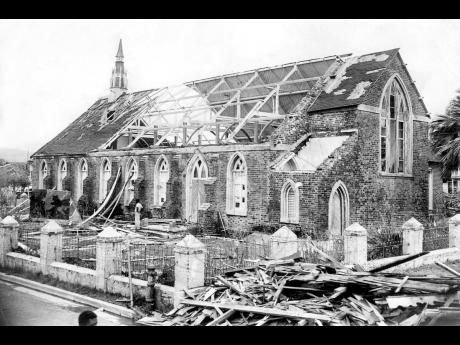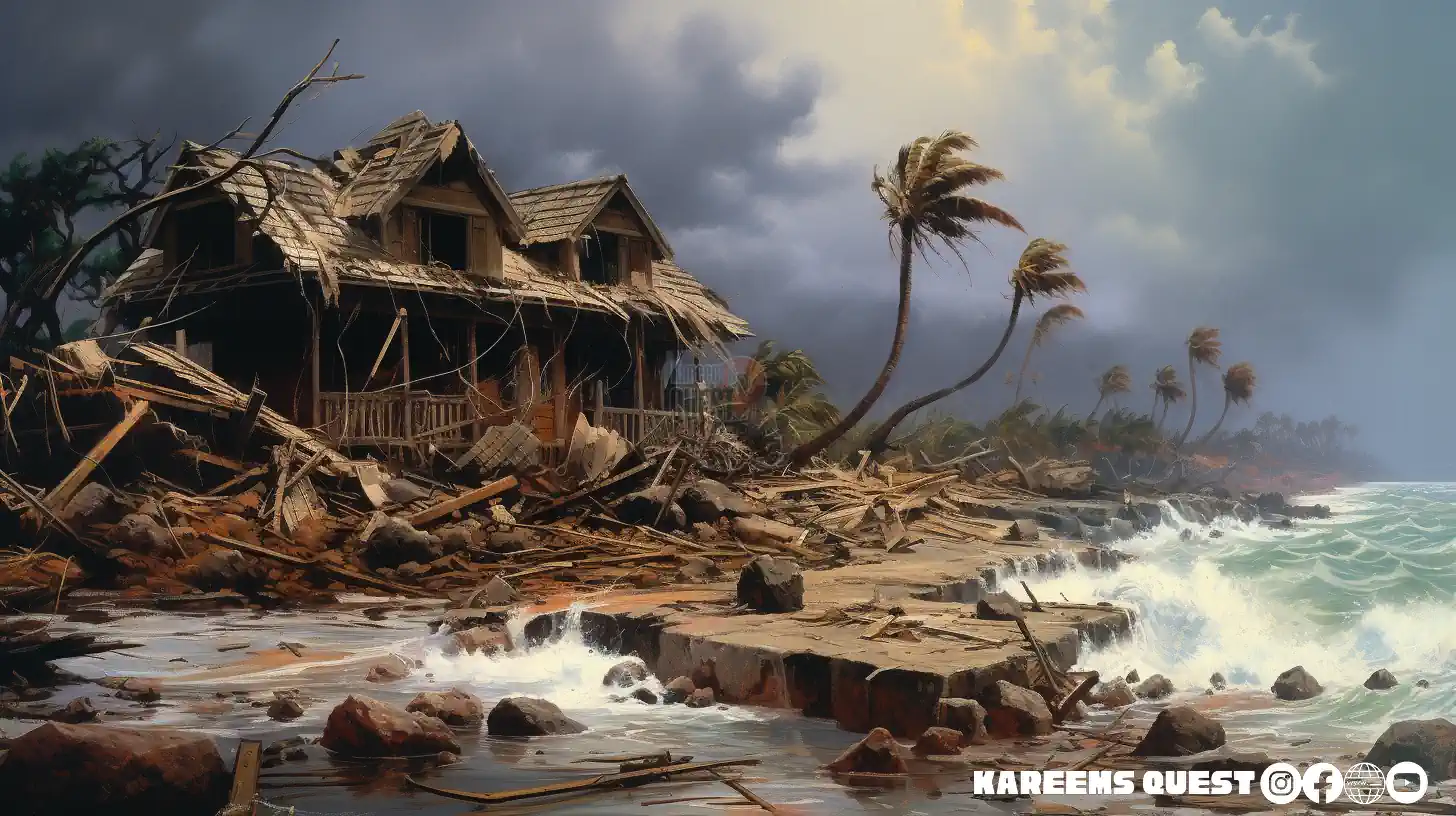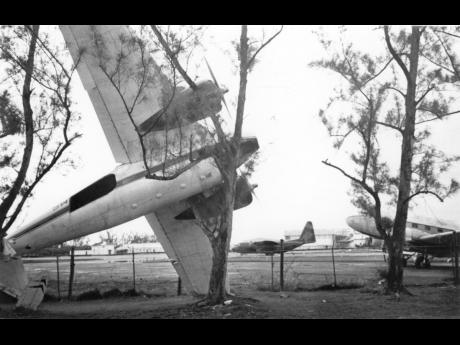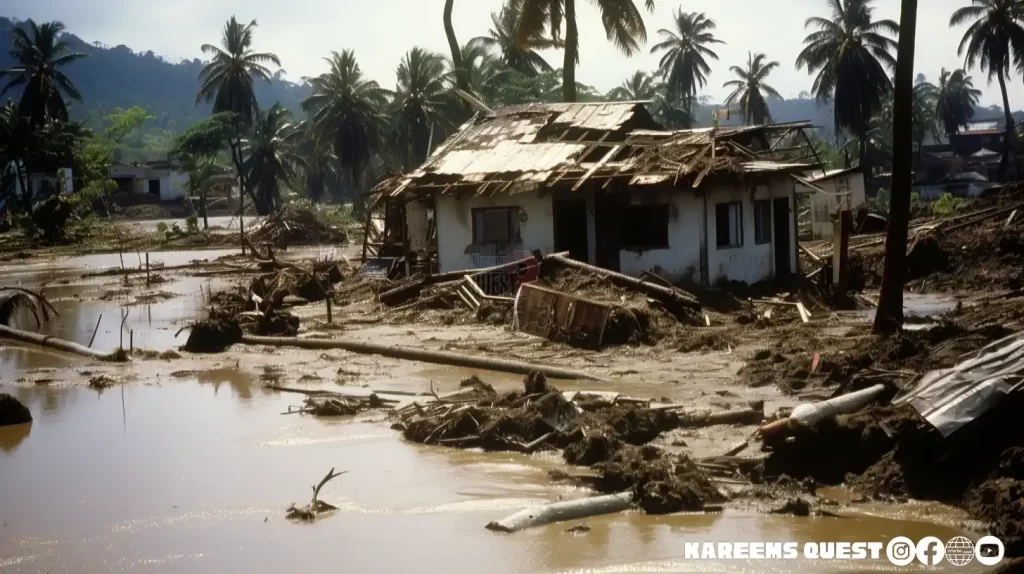Hurricane Gilbert was a powerful Category 5 hurricane that devastated Jamaica and other Caribbean countries in September 1988. It was the most intense Atlantic hurricane on record until it was surpassed by Hurricane Wilma in 2005 (1). KareemsQuest.com explores the impact of Hurricane Gilbert on Jamaica, how the country responded and recovered, and what lessons were learned from this historic disaster.
The Impact of Hurricane Gilbert on Jamaica

Hurricane Gilbert formed from a tropical wave on September 8, 1988, east of Barbados (2). It quickly strengthened into a hurricane and reached its peak intensity on September 13, with maximum sustained winds of 185 mph and a minimum central pressure of 888 mb. It made landfall on Jamaica on September 12 as a Category 3 hurricane, with winds of 140 mph. It crossed the entire island from east to west, causing widespread damage and destruction.
Hurricane Gilbert was the most destructive storm in Jamaica’s history, and the most severe since Hurricane Charlie in 1951 (3). It caused over $4 billion (1988 USD) in damages and claimed close to 50 lives (4)(5). More than 100,000 houses were damaged or destroyed, some beyond repair (6).

The country’s banana crop was largely wiped out, along with other agricultural products. Hundreds of miles of roads and highways were severely damaged, making transportation and communication difficult (7). Over 90 per cent of public health facilities suffered damages, affecting medical services and supplies (8). Over 800,000 people, about 30 per cent of the population, sought shelters outside their homes (9).
Hurricane Gilbert also produced storm surges up to 19 feet high and dumped more than 32 inches of rain on the island, causing extensive flooding and landslides (10). Many areas were left without water, electricity and telephone services for months (11). The hurricane also affected the environment, destroying coral reefs, mangroves and wildlife habitats.
Video of the Week
The Response and Recovery of Jamaica after Hurricane Gilbert
Then Prime Minister Edward Seaga declared a state of public emergency for some areas and described the scene as “like Hiroshima after the atom bomb”. He also appealed for international assistance and coordinated relief efforts with local authorities and agencies. The Jamaican government mobilized the army, police and volunteers to help with rescue operations, security and distribution of food, water and other essentials. The government also implemented measures to restore public services, repair infrastructure, rebuild houses and support affected sectors.

Jamaica received aid and support from various countries and organizations, such as the United States, Canada, Britain, France, Cuba, Venezuela, Mexico, Japan, China, the United Nations, the Red Cross and others. They provided financial assistance, technical expertise, equipment, materials and personnel to help with relief and recovery efforts. Some countries also sent military aircrafts and ships to transport supplies and evacuate people.
It took several months for Jamaica to recover from the impact of Hurricane Gilbert. The country faced many challenges and difficulties in restoring normalcy and rebuilding its economy. However, Jamaica showed resilience and solidarity in overcoming the disaster. The people demonstrated courage, creativity and generosity in coping with the situation. The country also learned valuable lessons from Hurricane Gilbert that helped improve its disaster preparedness and management in the future.
The Lessons Learned from Hurricane Gilbert
Hurricane Gilbert was a wake-up call for Jamaica and other Caribbean countries to take hurricanes seriously and prepare for their potential impacts. For KareemsQuest.com, here are some of the lessons learned from Hurricane Gilbert include:
- The importance of having accurate and timely weather information and forecasts to warn the public and take preventive actions.
- The need for having effective disaster plans and policies that involve all stakeholders and sectors.
- The value of having adequate resources and capacities to respond to emergencies and disasters.
- The benefit of having strong coordination and collaboration among local, national and international actors.
- The role of public education and awareness in enhancing disaster risk reduction and resilience.
- The significance of having social support networks and community participation in disaster recovery.
Hurricane Gilbert was one of the worst natural disasters that ever hit Jamaica. It caused immense damage and suffering to the country and its people. However, it also inspired a remarkable response and recovery effort that demonstrated Jamaica’s strength and spirit. It also taught important lessons that helped improve Jamaica’s disaster preparedness and management. At kareemsquest.com, we hope that this article has given you some insights into the history and impact of Hurricane Gilbert on Jamaica. For more information and news on Jamaica and the Caribbean, visit our website and search for us on social media.
Do you want more Kareem’s Quest content?
To get the latest Kareem’s Quest STORIES, click this link, then click the star button.



